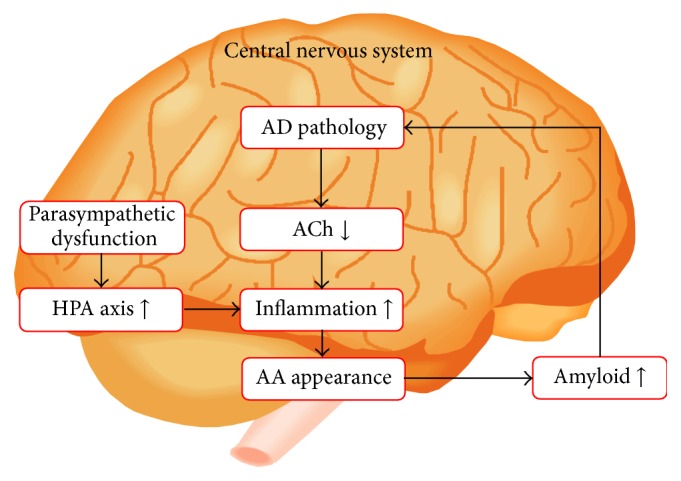Figure 1.

AA in LBD appears earlier than in Alzheimer's disease because of a combination of HPA axis hyperactivity and a small degree of ACh downregulation. In LBD, HPA axis hyperactivity occurs endogenously due to dysfunction of the parasympathetic nervous system. We refer to these processes as the hypothesis of the endogenous appearance of AA in LBD. Based on the small degree of ACh downregulation, HPA axis hyperactivity caused by deterioration of the autonomic parasympathetic nervous system gradually worsens before finally inducing hyperactive inflammation, which also causes AA. Continuous and recurrent appearance of AA exacerbates the amyloid pathology and further downregulates ACh. The order of the process is as follows: (1) deterioration of the parasympathetic nervous system, (2) hyperactivity of the HPA axis, (3) appearance of AA, and (4) downregulation of ACh. AA: anticholinergic activity, ACh: acetylcholine, AD: Alzheimer's disease, HPA axis: hypothalamic-pituitary-adrenal axis, and LBD: Lewy body disease. This figure is reproduced from Hori et al. [9] with permission from the Japanese Society of Neuropsychopharmacology (Tokyo, Japan).
